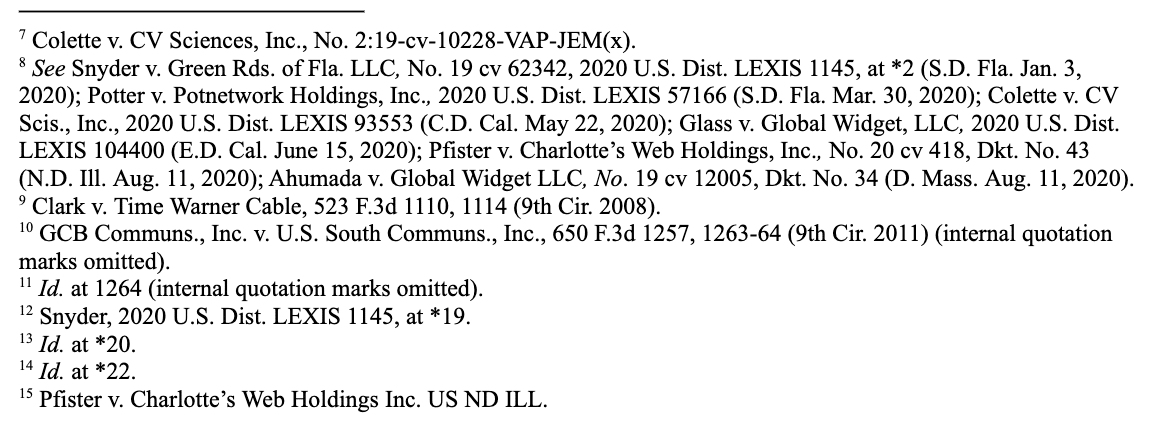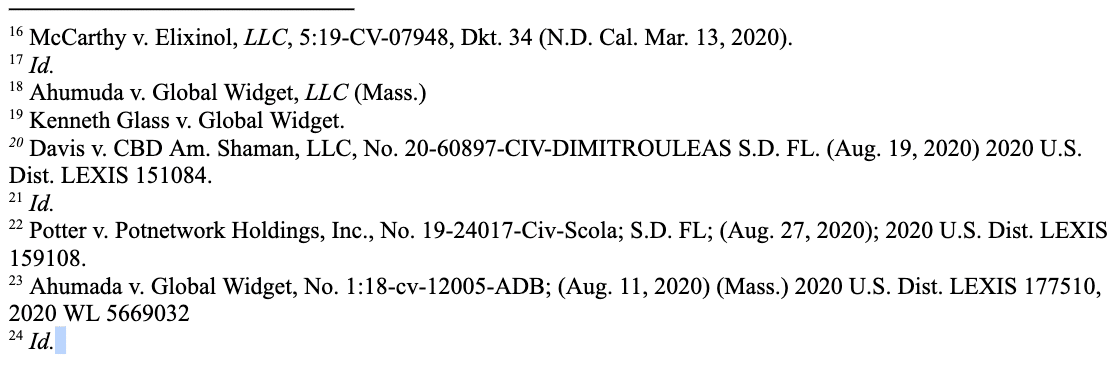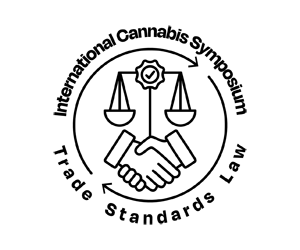By Lisa L. Pittman
The Background
Before 1937, industrial hemp was legal and used for clothing, paper, rope, and fuel. Hemp was grown by our forefathers—even required of early colonists. But in 1937, Congress passed the Marihuana Tax Act, which made all species of the Cannabis sativa L. plant illegal, including hemp, a sturdy low THC variety. THC is the only compound in the cannabis plant that causes a euphoric sensation. While the purported purpose of the Tax Act was to eliminate the use of cannabis as a drug, some theorists posit that the real intent of the act was to eliminate the competition hemp posed to paper and steel manufacturers, and cannabis was referred to as “marijuana” as a scare tactic in the Hearst owned newspapers in relation to its use as a drug, stoking racial fears.
Hemp was briefly re-legalized in World War II to make canvas and other items requiring the strength hemp provides. In 1970, marijuana was further criminalized federally when President Richard Nixon signed the Controlled Substances Act (CSA), which was passed by Congress and placed marijuana on Schedule I—the highest designation alongside heroin—cocaine is Schedule II. Schedule I narcotics are deemed to have no accepted medical use, to be unsafe even with medical supervision, and to have a high potential for abuse. As an aside, Nixon’s Schaffer Commission, tasked with studying drugs and advising the president, recommended that marijuana not be placed on the Schedule and opined that marijuana was relatively harmless. President Nixon’s counsel and assistant, John Ehrlichman, has since publicly admitted that marijuana was purposely included anyway to negatively target certain populations:
The Nixon campaign in 1968, and the Nixon White House after that, had two enemies: the antiwar left and black people. You understand what I’m saying? We knew we couldn’t make it illegal to be either against the war or black, but by getting the public to associate the hippies with marijuana and blacks with heroin, and then criminalizing both heavily, we could disrupt those communities. We could arrest their leaders, raid their homes, break up their meetings, and vilify them night after night on the evening news. Did we know we were lying about the drugs? Of course we did.
Hemp has been federally outlawed along with marijuana until January 1, 2019. In 2014, under the Agricultural Improvement Act, known as the “2014 Farm Bill,” hemp under .3 percent THC was finally permitted to be grown again, but only on a limited basis if in conjunction with a state’s industrial hemp program, or with a license by a public university for a research pilot program. However, to the misconception of many, in neither of these instances were hemp or the products made from hemp allowed to cross those states’ lines—hemp was still considered marijuana under the CSA. But hemp CBD flew across the internet, including on Amazon, and no enforcement agency was stopping it, other than post offices or local law enforcement mistaking it for marijuana of the high THC variety.
The market became so lucrative that Senator Mitch McConnell of Kentucky passed the Hemp Farming Act inside of the 2018 Farm Bill. This action legalized hemp as an agricultural commodity and also removed hemp from the definition of marijuana under the CSA. This ushered in a new era and facilitated an entire new industry with President Donald Trump’s signature on December 20, 2018. Hemp is simply a type of cannabis plant defined as having less than .3 percent THC, much like roses can be bred to be yellow or red, and its characteristics lend itself both to hearty industrial materials as well as therapeutic products that can be extracted out of the plant. However, if the plant contains any THC above .3 percent, it is marijuana under the CSA—which poses a difficult balancing act for the farmer which could be the subject of another article. All but two states have followed suit in legalizing hemp, and most have submitted hemp regulation plans to the USDA as required to demonstrate how the state intends to control and track hemp in compliance with regulations promulgated by the USDA for hemp production last year.
In just a few short years, licensed hemp producers began to multiply in states, first in Colorado, Oregon, Kentucky, and Montana. Hemp is used in the seats and car parts of Mercedes and BMW for example. It can be used to construct inflammable buildings, to sequester carbon from the atmosphere, and to remediate soil. Typically, hemp has been imported from China, and some from Canada and Europe for textiles and industrial products. Extracts derived from hemp plants are infused into a variety of products, both ingestible and topical, to produce therapeutic effects, sometimes without the side effects of synthetic pharmaceutical drugs. There is a growing class of people who are true believers in the healing properties of hemp CBD. As the public becomes more aware, businesses have been aggressively pursuing market share by peddling their own versions of hemp CBD products for humans and pets across all types of marketing platforms. This is done in spite of recent illegality and the growing regulatory presence of the Food and Drug Administration (FDA) over hemp derived CBD. CBD is projected to be a $2 billion industry by the close of 2020. As with any new industry, it is caveat emptor right now; some products are indeed high quality and fairly effective, and others sit beside the register at your local gas station.
CBD is one of many active chemical compounds in the cannabis plant, and hemp derived CBD has found exponential popularity, now found in a wide array of products, including oil, gummies, capsules, topical creams, and drinks. These products have been floating around in the stream of commerce virtually unregulated. Thus, on the same day the President signed the 2018 Farm Bill, the FDA issued a statement that it retained authority to regulate CBD products. The FDA also asserted that CBD was considered a drug because FDA had approved Epidiolex, a marijuana derived CBD drug for epilepsy. The FDA also stated that CBD may not be marketed as a dietary supplement, although many believe that legally, that is where it belongs. Finally, the FDA also stated that CBD may not be infused into foods or beverages placed in interstate commerce. On this last point, each State’s health department has a different take on this—some allowing infused foods, but, until the FDA clarifies its stance, the interstate prohibition on infused foods does cause problems with federally oriented services such as banking and insurance.
The FDA has conducted public hearings and taken extensive public comment on how hemp CBD should be regulated. It is reportedly in the midst of evaluating how to regulate hemp CBD products, which are currently marketed with the mere disclaimer that the FDA has not reviewed their statements and that the products are not required to treat or cure any symptom or disease, along with the origin State’s label requirements, if any. About the only way a consumer can check up on what it is in a particular bottle of hemp CBD is to check its website or QR code for a certificate of analysis (COA) that reflects the test results and tracing of the product along with its manufacturer. These documents are not necessarily that reliable though and for that reason, the 2018 Farm Bill made falsification of COAs a felony. For now, in the absence of regulation, the FDA has issued some public guidance material for consumers. To date, all an attorney has to go on to advise clients for guidance are the FDA labeling guidelines and the series of warning letters issued by the FDA and FTC against CBD companies making impermissible claims about their products and other marketing and labeling foibles.
Plaintiffs’ attorneys have seized on the vulnerabilities of this nascent industry and there is already a crop of lawsuits based on mislabeling, misrepresentation, and related claims. But, because the FDA has not determined yet how CBD will be regulated and has not yet issued its guidelines for labeling, content, and marketing of hemp CBD products, one court after another has begun to either abate or dismiss these CBD mislabeling cases until the FDA releases its CBD rules, often invoking the primary jurisdiction doctrine. The consumer lawsuits make nearly identical claims: (1) the CBD products are illegal drugs, foods, or dietary supplements that violate the FDA guidelines; (2) the CBD products make impermissible health claims; and/or (3) the CBD products are mislabeled in terms of their curative properties, CBD content or dosage information, and that the products would not have been purchased if it had been known the products were unregulated.
As a result, CBD companies have raised similar defenses, resulting lately in courts’ ruling similarly on these issues. For example, in January 2020, the Southern District of Florida in the Snyder case stayed a CBD class action relating to the marketing and sale of CBD products until the FDA sets forth a legal path for the manufacture, sale, and marketing of the products. The court concluded a judgment was premature because “FDA regulations currently provide little guidance with respect to whether CBD ingestibles, in all their variations are food, supplements, nutrients or additives and what labeling standards are applicable to each iteration,” and thus, deemed the existing regulatory framework inadequate to resolve these issues. What follows is a brief survey of these cases over the past year.
The Lawsuits
Courts like the Snyder case in the Southern District of Florida, faced with considering whether CBD products are mislabeled have reached similar temporary resolutions. These courts, including several in California, explained that although the FDA expressed its position about CBD products in warning letters, these letters do not amount to final agency action and that the FDA has yet to formally express its position on the regulation of these products. The Court in Collete also wrote that “the number of CBD class actions currently pending in the federal district courts makes clear the danger of inconsistent adjudications.” Accordingly, these courts have all issued stays, concluding they would need the FDA’s final rules before issuing orders in those cases.
Since January 2020, at least six federal district courts have stayed false advertising cases involving CBD products at the pleading stage on primary jurisdiction grounds. “The primary jurisdiction doctrine allows courts to stay proceedings or to dismiss a complaint without prejudice pending the resolution of an issue within the special competence of an administrative agency.” It “is a prudential doctrine under which courts may, under appropriate circumstances, determine that the initial decision making responsibility should be performed by the relevant agency rather than the courts.” “It is useful . . . in instances where the federal courts do have jurisdiction over an issue, but decide that a claim requires resolution of an issue of first impression, or of a particularly complicated issue that Congress has committed to a regulatory agency.”
Regulating these new hemp CBD products is a complicated issue indeed, that will also implicate the Food Drug & Cosmetic Act. As these courts have explained, resolving the claims at issue in these cases requires “consistent guidance” from the FDA on whether “some or all CBD products are food additives, supplements, or nutrients that can be safely marketed to the public and, if nutrients, whether the labelling standards and requirements for CBD products will be different or the same as for other nutrients.” FDA’s recent steps to study the CBD market and its public statements have been viewed as evidence the agency has “an active interest in regulating the manufacture and marketing of CBD products.” These courts have therefore elected to pause litigation challenging CBD-product advertising “until the FDA completes its rulemaking regarding the marketing, including labeling, of hemp-derived ingestible products.”
A class action was filed in the U.S. District for Illinois against the world’s largest CBD company, Charlotte’s Web, alleging that the products were labeled as dietary supplements and did not contain the amount of CBD claimed on the label. The U.S. District Court Judge denied Charlotte’s Web’s Motion to Dismiss without prejudice, but granted a stay on the litigation invoking the primary jurisdiction doctrine on September 16, 2020, and requiring periodic status reports on the FDA’s definition of ‘hemp extract,’ at issue in this lawsuit as it pertains to dosing expectations. In a joint stipulation, the parties stated, “the court and the parties would benefit from the FDA’s expertise on the question of defining ‘hemp extract,’ such that a stay based on primary jurisdiction is warranted. . . .”
Another fairly high profile case was a class action in the Northern District of California against Colorado-based Elixinol, alleging that its CBD capsules, tinctures, and dog treats were “illegal” to sell. Elixinol’s attorneys argued that the FDA’s position on CBD products remains “in a state of flux” and therefore the products are not “illegal.” After thorough briefing on a motion to dismiss, including attacks on the sufficiency of plaintiffs’ pleading by Elixinol, the plaintiffs dropped all claims after the Court stayed all of plaintiffs’ claims pending the FDA’s conclusion of its rulemaking process.
In Massachusetts, a federal judge stayed a class action determination over allegations that over 1,000 CBD edible products did not contain the potencies listed on the labels. The judge cited the other stayed cases and held the “FDA is in the best position to determine whether CBD is a legal product in the forms marketed by defendant, whether those products are required to contain certain dosages of CBD, and how those products should be manufactured, tested, and labeled to ensure compliance with FDA requirements.” A prior case brought by a different plaintiff against this same company alleging the same general claims was also stayed.
Chain retailer American Shaman was hit with a complaint in the Southern District of Florida under its Deceptive and Unfair Trade Practices Act alleging that its products contained heavy metals, contrary to statements made on its websites. Among other grounds, American Shaman argued that the case should be dismissed until the FDA releases regulations governing CBD products. The plaintiffs then voluntarily dismissed their claims without prejudice.
A recent case against three defendants allege tested CBD products contained less CBD than advertised: In Potter v. Potnetwork Holdings, Inc., Diamond CBD, Inc. & First Capital Venture Co., filed in the U.S. District Court for the Southern District of Florida, the plaintiffs alleged the defendants’ products contain “a significantly lower amount of CBD than represented.” The Court denied defendants’ motions to dismiss in part and also denied Motions to Stay the lawsuit pursuant to the primary jurisdiction doctrine. Plaintiffs brought claims for unjust enrichment and a violation of the Florida Deceptive and Unfair Trade Practices Act. After the Court’s ruling, the parties settled and dismissed the suits with prejudice.
In Ahumada v. Global Widget LLC d/b/a Hemp Bombs, filed in the U.S. District Court for the District of Massachusetts, a class action complaint was asserted with claims for breach of express warranty, breach of contract/common law warranty, and Magnuson-Moss—breach of express warranty (15 U.S.C.A. § 2301 (West) et seq.). The plaintiff alleges that “independent laboratory testing, commissioned by plaintiff’s attorney, confirms that the CBD products do not contain the amount of CBD as advertised.” This is becoming prevalent in laboratories: Attorneys are sending products in for testing for the purposes of filing lawsuits. This Court issued a stay of the litigation under the primary jurisdiction doctrine to await the regulations to be promulgated by the FDA.
Gaddis v. Just Brands USA Inc., et al., filed in the U.S. District Court for the Southern District of Florida, alleged that defendant’s products “repeatedly overstate” the amount of CBD they contain, with some containing “only a fraction of the CBD advertised,” and some containing “no CBD whatsoever.” The Gaddis complaint alleges claims for breach of express warranty, breach of the implied warranty of merchantability, unjust enrichment, fraud, violations of N.Y. Gen. Bus. Law § 349 and 350 (McKinney), and a violation of the Florida Deceptive and Unfair Trade Practices Act. The plaintiffs in this case dismissed their claims without prejudice for unknown reasons.
Federal legalization of hemp brought another fringe benefit: the ability to seek redress in court. While hemp was still marijuana at the federal level, filing suit was not considered an option and contracts were in danger of being voided for being contrary to federal law or public policy, despite a state legal regime for the plant. Even in Colorado, the courts frowned upon hemp lawsuits and no one could expect to get a temporary injunction or pursue any remedy in court due to the federal illegality. Also due to hemp’s only recent legal status, obtaining a bank account is difficult, obtaining lending is difficult, obtaining insurance is difficult, and generally transacting business with a variety of experience levels and intentions can be difficult. Some areas of the country produce coveted hemp and residency requirements produce quick partnerships that are often fraught with peril, and usually not documented very well. This industry is still tenuous and new. On top of these other challenges hemp industry participants face, plaintiffs’ lawyers are having products tested for inaccurate results and are casting their first lines. The courts are now open for business and lawsuits involving hemp now touch nearly every area of law and cause of action. This is an exciting time to be a part of the development of new laws, and as reflected here, Judges are confronted with quickly learning the nuances of this nascent emerging industry facing its first wave of litigation.


























